I very much enjoyed my visit to the RetroClassics show at the Stuttgart Messe last year, so, as the diary conveniently required me to be in Zurich the day after the show would finish, I managed a repeat visit in 2009. It was still an excellent show, for sure, but there were a few signs that the world had changed in the past 12 months. The halls were not quite so full, and I had the impression that fewer of the high end dealers were in attendance. Nonetheless, this was a huge show spread over 9 halls, which represents far more than anyone can really absorb in a single day. Of course, I tried! Although I managed just over 400 photos in one day, lots of the display cars eluded my camera, either because they were not easy to get to, because the crowds never got out of the way, or some other reason. So, for what there is, I’ve presented this report by marque, even though some of the marques were spread over multiple different stands. There is plenty here that is unusual to those accustomed to cars on display at a British Classic Car event, and that is, for me at least, part of the attraction of this event.
ABARTHAbarth was a “featured marque” and had a large display stand right in the middle of Hall 4. There were probably more different Abarths gathered together here than you will ever see in one place. Sadly, I did not take notes of what was here, and as it was one of the last places I went to (it was too crowded earlier on), I was in a hurry, as the show was about to close.
The 500-based 595.
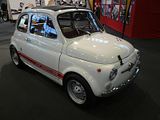 The 600 proved a more popular basis for tuning, as these cars show, ranging from the mildly modified 750 to the full-fat 1000 models.
The 600 proved a more popular basis for tuning, as these cars show, ranging from the mildly modified 750 to the full-fat 1000 models.
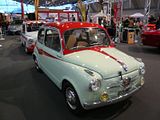
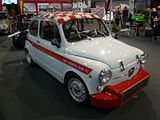
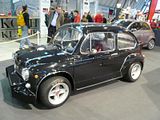 This one was based on the Fiat 2300 Coupe
This one was based on the Fiat 2300 Coupe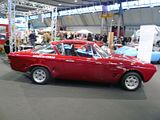 And this on the 850 Coupe
And this on the 850 Coupe
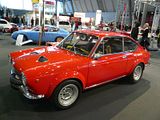
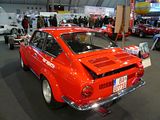 This one on the Simca 1300 Coupe
This one on the Simca 1300 Coupe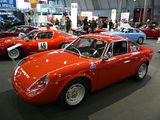 In the 1960s, Abarth was very successful in motor sport events and this diverse range of cars represents many of those winning vehicles
In the 1960s, Abarth was very successful in motor sport events and this diverse range of cars represents many of those winning vehicles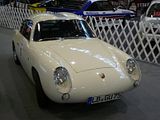
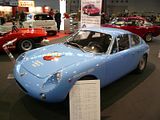
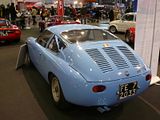
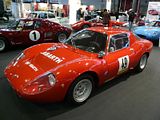
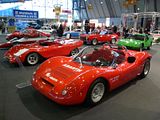
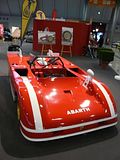
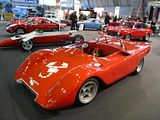
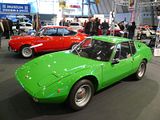
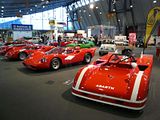 The display was brought right up to date with the latest Punto and 500 cars on show,
The display was brought right up to date with the latest Punto and 500 cars on show,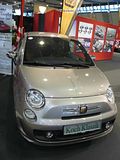 AC
ACA lone car, this. The 1958 AC Aceca, the coupe version of the Ace, a car which mutated into the oh-so-familiar Cobra.
 ADLER
ADLERA German marque known for innovation in the 1930s. This is an original, unrestored competitor from the 1937 Le Mans 24 hr race.
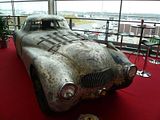 ALFA ROMEO
ALFA ROMEOI hardly know where to begin here, so let’s start with the absolute best, a 6C 1750 from 1933. I just love these cars.
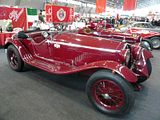 The P3 was a more extreme racer that followed not long after.
The P3 was a more extreme racer that followed not long after.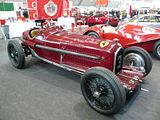 Dating from the early 1960s was the not-terribly successful 2600 Coupe, with 2 different versions on show.
Dating from the early 1960s was the not-terribly successful 2600 Coupe, with 2 different versions on show.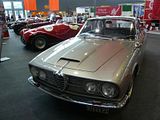
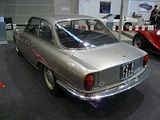
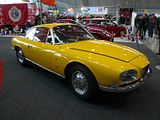
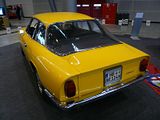 The mainstay of the 1960s range was the Giulia, which came as a boxy, but aerodynamic Berlina, a Coupe and a Convertible.
The mainstay of the 1960s range was the Giulia, which came as a boxy, but aerodynamic Berlina, a Coupe and a Convertible.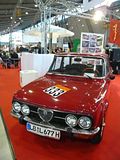
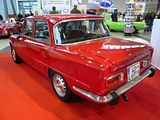 Various Montreal cars were scattered around the exhibition.
Various Montreal cars were scattered around the exhibition.
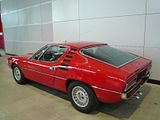 Zagato has often been commissioned to produce unusual versions of the standard cars, and these are just some of the offerings: the 1960 Giulietta SZ model, the 1300 Junior and 1600 models from the early 1970s and the more famous SZ from the late 1980s.
Zagato has often been commissioned to produce unusual versions of the standard cars, and these are just some of the offerings: the 1960 Giulietta SZ model, the 1300 Junior and 1600 models from the early 1970s and the more famous SZ from the late 1980s.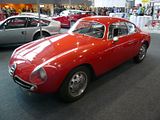
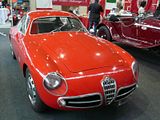

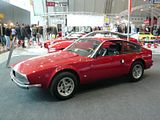
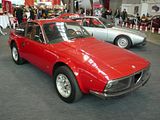
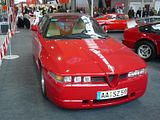 No sign of anything from the mid 70s and early 80s, apart from this lone late model 33 Giardinetta. Now a rare car indeed, I rather liked these when they were new.
No sign of anything from the mid 70s and early 80s, apart from this lone late model 33 Giardinetta. Now a rare car indeed, I rather liked these when they were new.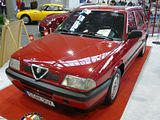
 An 8C Competizione was included in the show, and very splendid it looks, still.
An 8C Competizione was included in the show, and very splendid it looks, still.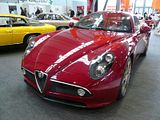

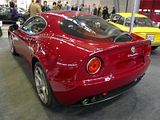 The latest offering was on show, the MiTo.
The latest offering was on show, the MiTo. 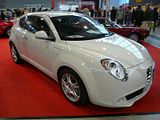 ASTON-MARTIN
ASTON-MARTINThis Ulster model from the 1930s and even now is a popular competitor at vintage race events
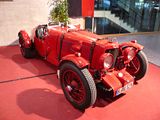 A rare LeMans version of the Virage-based V8 Vantage
A rare LeMans version of the Virage-based V8 Vantage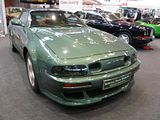 AUDI
AUDILots of Audi cars around the show, as you might expect. This is the Centenary of the marque and we can expect to see lots of celebrations during the year.
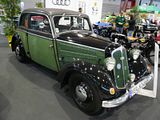 The “rebirth” of the Audi badge came in the mid 1906s, with a bewildering array of mid-sized cars, number from 60 to 90, with saloons and estate cars.
The “rebirth” of the Audi badge came in the mid 1906s, with a bewildering array of mid-sized cars, number from 60 to 90, with saloons and estate cars.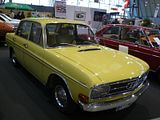
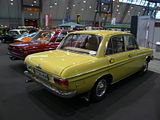 Oldest car on show was one of the famous racers from the 1930s.
Oldest car on show was one of the famous racers from the 1930s.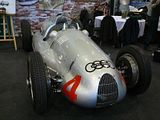 The 100 model was represented in its first three generations, before it morphed into the A6 range.
The 100 model was represented in its first three generations, before it morphed into the A6 range.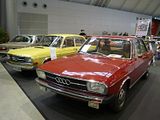
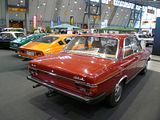
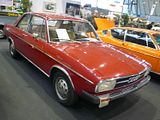
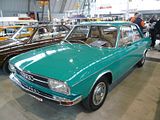
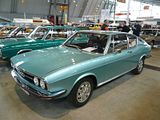

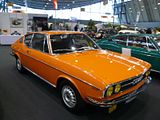
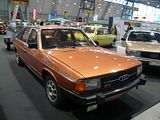
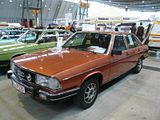
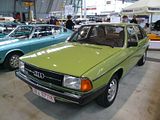
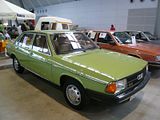
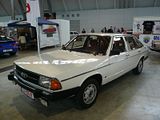
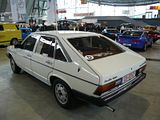
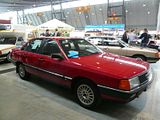
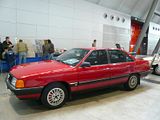
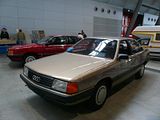 Upmarket brother to the second and third generation cars was the 200, and there were several of these.
Upmarket brother to the second and third generation cars was the 200, and there were several of these.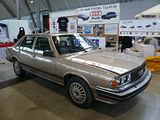
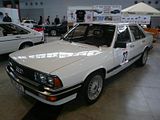
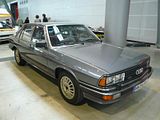 Even more upmarket was the V8 saloon, a car which sold in small numbers, as it was deemed too similar to the lesser models on which it was based.
Even more upmarket was the V8 saloon, a car which sold in small numbers, as it was deemed too similar to the lesser models on which it was based.
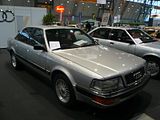
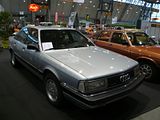 Unknown in the UK, as it was never exported there, was the Audi 50, a precursor to the very similar VW Polo.
Unknown in the UK, as it was never exported there, was the Audi 50, a precursor to the very similar VW Polo.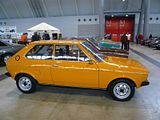
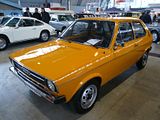
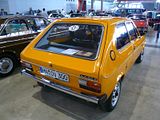
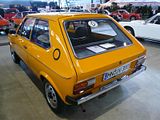 The first Audi 80, launched in 1972 was a landmark car and not just because it was feted as “Car of the Year”. It also formed the basis for the VW Passat.
The first Audi 80, launched in 1972 was a landmark car and not just because it was feted as “Car of the Year”. It also formed the basis for the VW Passat.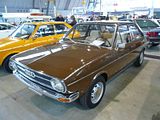 More recently, there was this RS6, from the previous generation. Finished in a Lamborghini colour, I could not help feel that much of the point of these cars had been lost with the vivid paintwork. Audi S and RS cars are all about subtlety with their stomping performance!
More recently, there was this RS6, from the previous generation. Finished in a Lamborghini colour, I could not help feel that much of the point of these cars had been lost with the vivid paintwork. Audi S and RS cars are all about subtlety with their stomping performance! The very latest cars were represented by the R8, a worthy addition to the heritage of this marque.
The very latest cars were represented by the R8, a worthy addition to the heritage of this marque. AUSTIN-HEALEY
AUSTIN-HEALEYA lone example of the much loved Big Healey, the 3000
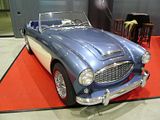 BAUR
BAURWell known for their conversions of 3 series BMWs into convertibles before BMW started offering their own versions………. new to me was the 4 door car, not one I had ever seen before.
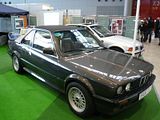
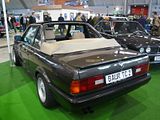
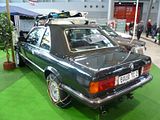
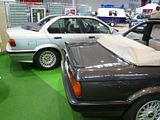
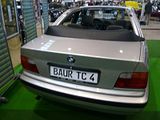 BENTLEY
BENTLEYA few of these cars were in the show, generally on traders’ stands. This is a recent Arnage:
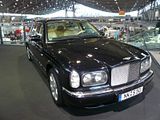
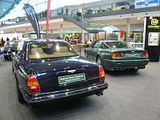 BITTER
BITTERA lone car, a CD model from the mid 1970s, was lurking on a stand with an eclectic mix of other vehicles.

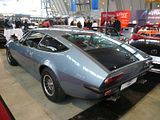 BMW
BMWThat “forum favourite”, the 3 series, was well represented from its earlier incarnations.

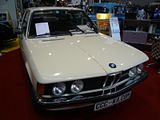
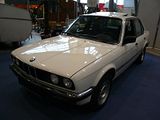
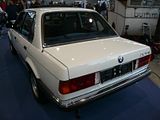
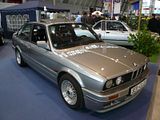
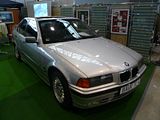
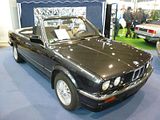 Precursor to the 3 series was the 1602/2002 range, and there were a couple of examples of that car, including the rather unsuccessful Touring model, and the fully open convertible that had a very short production life.
Precursor to the 3 series was the 1602/2002 range, and there were a couple of examples of that car, including the rather unsuccessful Touring model, and the fully open convertible that had a very short production life.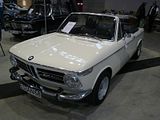

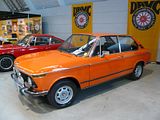
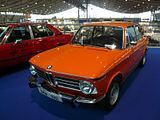
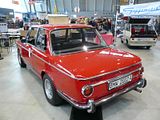 Hard to remember that BMW was on the brink of oblivion in the late 1950s when their production was confined to small number of large saloons like this 501 (nicknamed the “Baroque Angel”) and this even rarer 503 Coupe.
Hard to remember that BMW was on the brink of oblivion in the late 1950s when their production was confined to small number of large saloons like this 501 (nicknamed the “Baroque Angel”) and this even rarer 503 Coupe.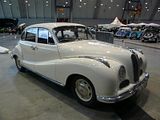
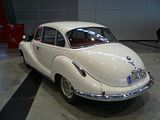
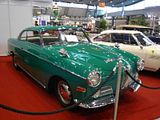 BMW had a licence to make the Italian Isetta bubble cars, and these sold in enough volume to offset the difficulties with selling enough of the 501/502/503 cars.
BMW had a licence to make the Italian Isetta bubble cars, and these sold in enough volume to offset the difficulties with selling enough of the 501/502/503 cars.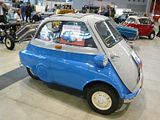 It was only with the launch of the 700 series cars that BMW looked like they could survive and start to grow. There was a low-selling convertible as well as coupe and saloon models.
It was only with the launch of the 700 series cars that BMW looked like they could survive and start to grow. There was a low-selling convertible as well as coupe and saloon models.
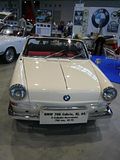
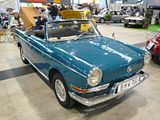
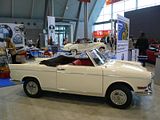 In 1968, the E3 models appeared. A more sporting alternative to the “S” Class Mercedes, the 2500/2800 saloons, known as Bavaria in the US, were very successful and led to the 7 series range with which we are still familiar
In 1968, the E3 models appeared. A more sporting alternative to the “S” Class Mercedes, the 2500/2800 saloons, known as Bavaria in the US, were very successful and led to the 7 series range with which we are still familiar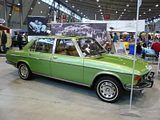 The E24 6 series remains one of BMW’s most elegant cars, and this M635CSi was a real GT, with subtle changes over the cooking models in the 1980s (not that the cooking models were exactly lacking!).
The E24 6 series remains one of BMW’s most elegant cars, and this M635CSi was a real GT, with subtle changes over the cooking models in the 1980s (not that the cooking models were exactly lacking!). Even faster, but never a sales success was the M1, of which fewer than 350 cars were built.
Even faster, but never a sales success was the M1, of which fewer than 350 cars were built.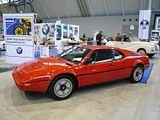 BUGATTI
BUGATTIA number of “traditional” Bugatti cars were on show.
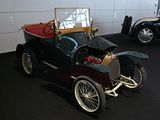
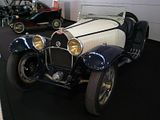
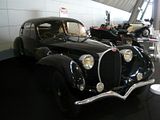
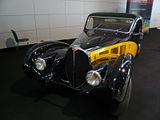

 BUICK
BUICKJust one Buick on show, a Skylark convertible from the first half of the 1960s.
 CADILLAC
CADILLAC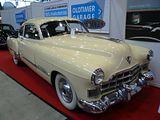
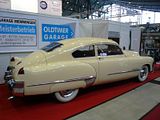 CHEVROLET
CHEVROLETA 1957 Bel Air, in the less commonly encountered 4 door sedan version. Of all the classic Chevys the ’57s are the most highly prized these days.
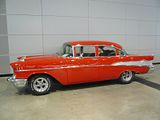 An early example of the Camaro, dating from 1967. More elegant than the modern recreation, for sure, much as I like the external styling of the latest model.
An early example of the Camaro, dating from 1967. More elegant than the modern recreation, for sure, much as I like the external styling of the latest model.
 CHRYSLER
CHRYSLERA lone New Yorker from the 50s
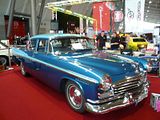 DKW
DKWIn the 1950s, the 3.6, SonderKlasse and later renamed 1000 SP models were aimed at middle class families who wanted something better than a Volkswagen.
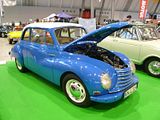
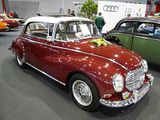 A great display of these innovative cars that can be seen as the precursor to the modern Audi.
A great display of these innovative cars that can be seen as the precursor to the modern Audi.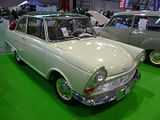
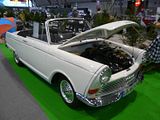 The 1000SP Sports Coupe was a blatant copy of the Ford Thundebird. Not the success of its progenitor, for sure, but now these cars are rare and valuable.
The 1000SP Sports Coupe was a blatant copy of the Ford Thundebird. Not the success of its progenitor, for sure, but now these cars are rare and valuable.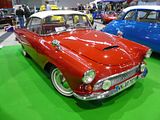 In the mid 1960s, DKW launched a new front wheel drive design, which appeared in saloon and convertible versions. This is the car which underwent some changes to re-emerge as the Audi 60/75/80/90 range.
In the mid 1960s, DKW launched a new front wheel drive design, which appeared in saloon and convertible versions. This is the car which underwent some changes to re-emerge as the Audi 60/75/80/90 range. 
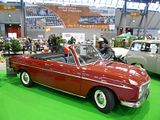 FERRARI
FERRARIThis was the other centrepiece of Hall 4, and a fantastic display of so many different Ferraris it was too.
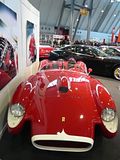


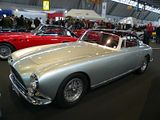
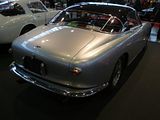
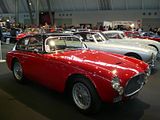
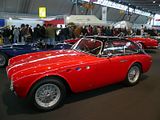

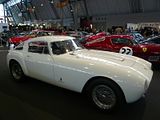
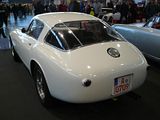
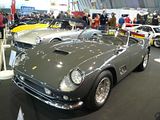
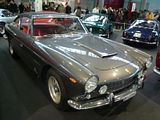
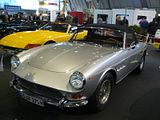
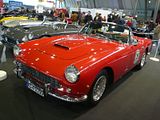

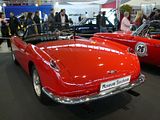
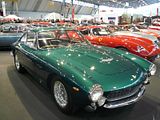
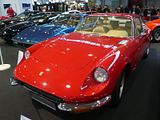
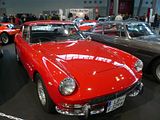
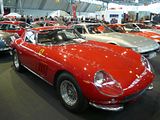
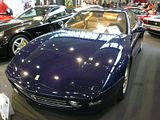

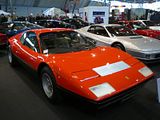
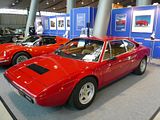
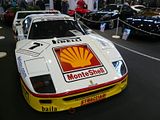
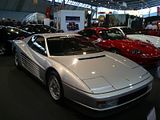

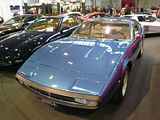
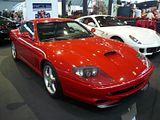
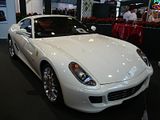
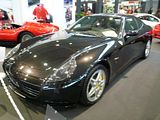 FIAT
FIATA display from the X1/9 club featured not just various production models but also the 1969 Bertone Runabout Concept car that was the precursor to this popular sports car.
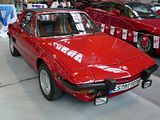
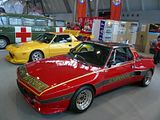
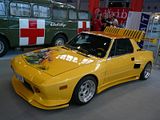
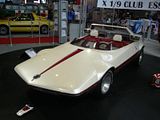
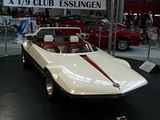 The 128 club had some nice cars, too. There was a late 1100 CL saloon model, and the early Rally model which was the 70s equivalent of what we would now call a hot hatch (this was before the hatch was popularised), and this lovely Italian plated 3P which was a restoration of an entry level 1100 car.
The 128 club had some nice cars, too. There was a late 1100 CL saloon model, and the early Rally model which was the 70s equivalent of what we would now call a hot hatch (this was before the hatch was popularised), and this lovely Italian plated 3P which was a restoration of an entry level 1100 car.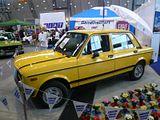
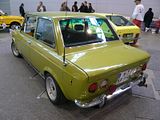
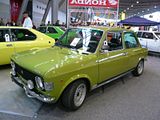
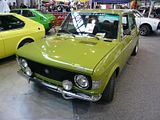
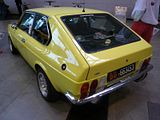
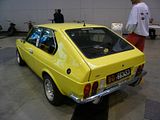

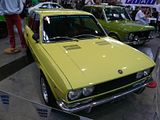 The 850 was also well represented. This rear engined small family car spawned very pretty coupe and spider models which looked nothing like the boxy sedan.
The 850 was also well represented. This rear engined small family car spawned very pretty coupe and spider models which looked nothing like the boxy sedan.
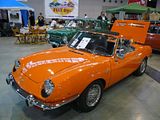 A good showing by the Topolino Club gave us a wide variety of 500 models to look at, including some very rare sporting versions.
A good showing by the Topolino Club gave us a wide variety of 500 models to look at, including some very rare sporting versions.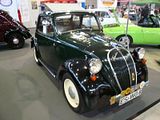

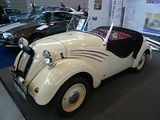
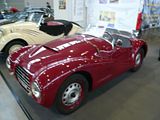 Elsewhere the Nuova 500 featured on plenty of other stands, as well.
Elsewhere the Nuova 500 featured on plenty of other stands, as well.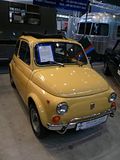
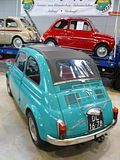 Precursor to the 500 was the 600, first seen in 1955 and a huge seller for Fiat well into the 1960s, and with Seat and Zastava badges even beyond then.
Precursor to the 500 was the 600, first seen in 1955 and a huge seller for Fiat well into the 1960s, and with Seat and Zastava badges even beyond then.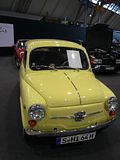
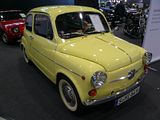 FORD
FORDA splendid collection of Model “T” vehicles was on the gallery above Hall 1, again this year.
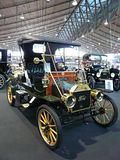
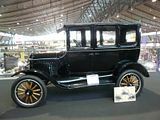
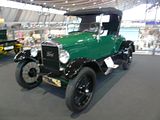 The “Ford Freunde” display included a variety of more recent cars, including an early version of the second generation Fiesta. Perhaps not a classic yet, but with their numbers already much reduced and likely to go down still further with the various European scrapping initiatives, perhaps not so out of place?
The “Ford Freunde” display included a variety of more recent cars, including an early version of the second generation Fiesta. Perhaps not a classic yet, but with their numbers already much reduced and likely to go down still further with the various European scrapping initiatives, perhaps not so out of place?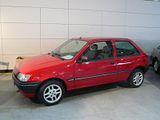 Also once a common sight was the Mark 2 Escort. Nowadays, this car is more often seen in rally guise or the very high end vehicles, but it was cars like these which were once in the list of the very best sellers in the UK.
Also once a common sight was the Mark 2 Escort. Nowadays, this car is more often seen in rally guise or the very high end vehicles, but it was cars like these which were once in the list of the very best sellers in the UK.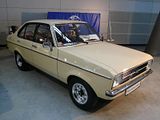

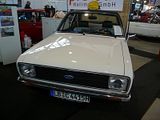
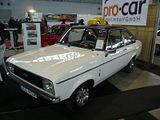 A good showing of the Capri. Although the German cars were outwardly the same as the UK ones, they had a different range of engines, with the V4 engine featuring heavily.
A good showing of the Capri. Although the German cars were outwardly the same as the UK ones, they had a different range of engines, with the V4 engine featuring heavily.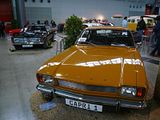

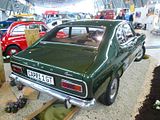
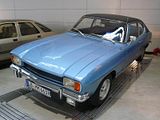
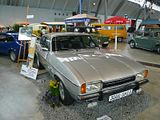
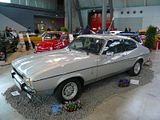 Taunus was Germany’s answer to the Cortina, though the use of the name goes back further – a full 70 years in fact. Only with the 1976 model did this car and the Cortina converge completely, though the 1970 models were closely related, even though the Germans got a 2 door coupe that never had a UK equivalent,
Taunus was Germany’s answer to the Cortina, though the use of the name goes back further – a full 70 years in fact. Only with the 1976 model did this car and the Cortina converge completely, though the 1970 models were closely related, even though the Germans got a 2 door coupe that never had a UK equivalent,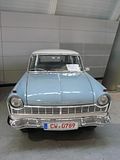
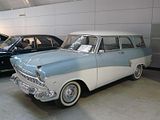
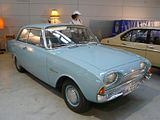


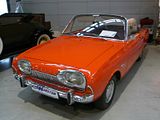
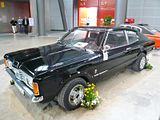 There was one lone example of a Cortina in the show, too.
There was one lone example of a Cortina in the show, too.  Even the Sierra – now 27 years since its launch – can claim a show place these days and there was one here to validate this.
Even the Sierra – now 27 years since its launch – can claim a show place these days and there was one here to validate this.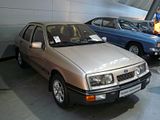 GLAS
GLASAbsorbed by BMW in 1967, these cars are a rare sighting, and none more so than this one, the 1004 which was only produced for a few months.
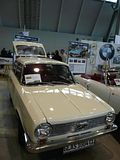
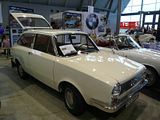
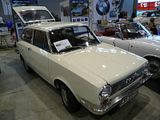
 GOGGOMOBIL
GOGGOMOBILKnown for their micro-cars in the 1950s, a number of these individual cars were on show:
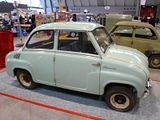
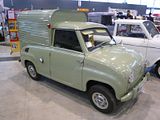
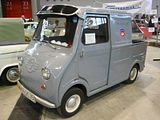
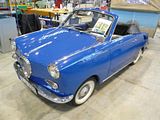
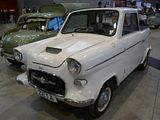 HANOMAG
HANOMAGDating from 1935 was this:
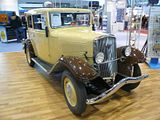 HORCH
HORCHA luxury marque from the 1930s, these cars were very expensive when new, and thanks to their rarity, on the rare occasions they come up for sale, are still very costly now
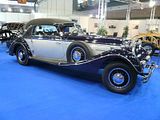
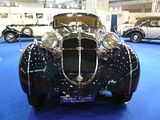
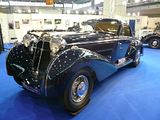
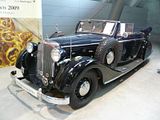 JAGUAR
JAGUARJust a few Jaguars were to be found, dotted around the displays. Mostly they were “E” types, but I found this XK140.
 There was a whole stand with some much more recent Jaguars, and the contrast between XK8 and later XK showed that both continue the Jaguar tradition of “grace, space and pace”.
There was a whole stand with some much more recent Jaguars, and the contrast between XK8 and later XK showed that both continue the Jaguar tradition of “grace, space and pace”.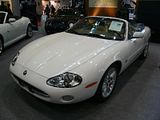
 LAMBORGHINI
LAMBORGHINIAmong the very few cars on show from this famous Italian marque was an example of the LM002 “monster” off-road vehicle.
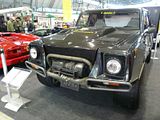 LANCIA
LANCIAOn the small Lancia owners club stand, I found an immaculate Gamma Coupe – one of those cars that promised so much but was let down by the compromised engineering of its 2.5 litre 4 cylinder engine and the habit of getting into big trouble if you ever turned the wheel on full lock when the engine was cold.
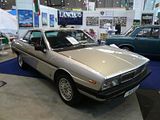
 There was also an early Flavia Berlina on show. Expensive, but beautifully engineered, as was the case for all Lancias until the Fiat takeover, the amount of space in what is hardly a large car is impressive.
There was also an early Flavia Berlina on show. Expensive, but beautifully engineered, as was the case for all Lancias until the Fiat takeover, the amount of space in what is hardly a large car is impressive.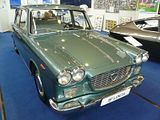
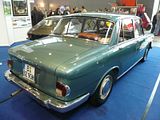
 A Flaminia Coupe, with body styled by Touring.
A Flaminia Coupe, with body styled by Touring.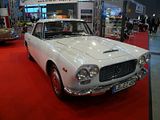 Earlier than this, and even more expensive given its size, was the Appia, and this first generation model sold in tiny numbers.
Earlier than this, and even more expensive given its size, was the Appia, and this first generation model sold in tiny numbers.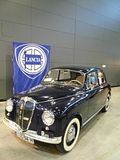
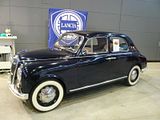 The Aurelia range from the late 1950s is now fetching big money, especially the B24 Spiders. This one is the not quite so valuable Convertible model.
The Aurelia range from the late 1950s is now fetching big money, especially the B24 Spiders. This one is the not quite so valuable Convertible model.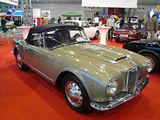 MASERATI
MASERATITucked away at the end of a corridor were these 2 contrasting treasures:
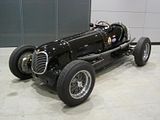
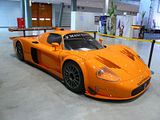
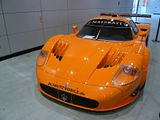
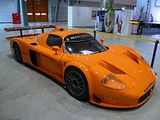 MATRA
MATRAOf the three cars on this stand, only one made my camera, a rare Grand Raid version of the Rancho.
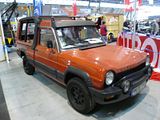
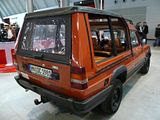 MERCEDES-BENZ
MERCEDES-BENZI would guess that numerically there were probably more Mercedes vehicles than any other in the show, as this marque has not just a lengthy history, but has always been held in high esteem, and almost all of its products have become “collectible” over time.
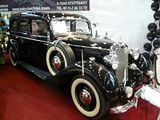 In the 1930s, Mercedes made some very costly and splendid cars, such as this 500K
In the 1930s, Mercedes made some very costly and splendid cars, such as this 500K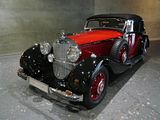 The 170 models were aimed at volume sales, and these cars continued little modified after the cessation of WW2 hostilities:
The 170 models were aimed at volume sales, and these cars continued little modified after the cessation of WW2 hostilities:
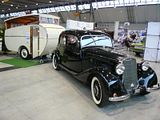 The 300SL was outrageously expensive when new in the mid 1950s and only produced in small numbers. Later an open topped car replaced the Gullwing coupe, but this was also a low volume car. Survival rates of both cars is very high and there were numerous examples of both at the Show.
The 300SL was outrageously expensive when new in the mid 1950s and only produced in small numbers. Later an open topped car replaced the Gullwing coupe, but this was also a low volume car. Survival rates of both cars is very high and there were numerous examples of both at the Show.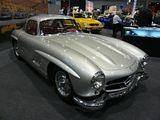
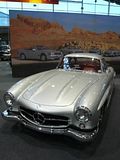
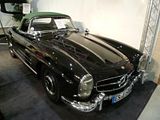
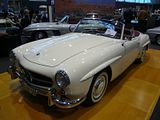 The 190SL was a more affordable version of this car, with many of the same styling cues in evidence. It was the first of the SL series that continues even to this day.
The 190SL was a more affordable version of this car, with many of the same styling cues in evidence. It was the first of the SL series that continues even to this day. Lots of the “Pagoda” SL cars on show. These elegant cars are really appreciating in value now, and a full restoration of even a very tatty car seems to be financially viable these days. On my list of “really desirable” cars, for sure!
Lots of the “Pagoda” SL cars on show. These elegant cars are really appreciating in value now, and a full restoration of even a very tatty car seems to be financially viable these days. On my list of “really desirable” cars, for sure!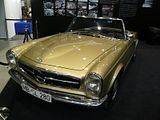
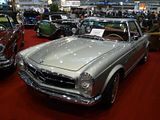 The 180/220 cars (known affectionately as the “Ponton”) were the volume sellers in the 1950s. Regular sedans were complemented by coupe and convertible models.
The 180/220 cars (known affectionately as the “Ponton”) were the volume sellers in the 1950s. Regular sedans were complemented by coupe and convertible models. At the top of the range in the 50s were the 300 series cars. The limousine version of this car was nicknamed the “Adenauer” as the German Chancellor, Konrad Adenauer, had one.
At the top of the range in the 50s were the 300 series cars. The limousine version of this car was nicknamed the “Adenauer” as the German Chancellor, Konrad Adenauer, had one.

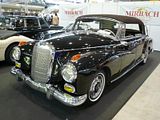
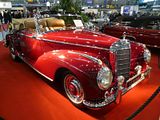 In 1959, even Mercedes proved that they could hold out no longer against the fashion for Fins, and the “Heckflosse” cars arrived. These models introduced many innovations to the market including fuel injection. over time the initial saloons were augmented with coupe and convertible models and larger engines appeared in the range.
In 1959, even Mercedes proved that they could hold out no longer against the fashion for Fins, and the “Heckflosse” cars arrived. These models introduced many innovations to the market including fuel injection. over time the initial saloons were augmented with coupe and convertible models and larger engines appeared in the range.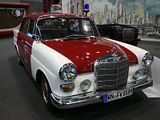
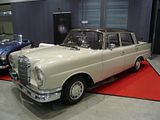 Bigger brother to this car was the first “S” class, premiered in 1965. The ultimate version of this was the 6.3, a real “Q” car, if ever there was one!
Bigger brother to this car was the first “S” class, premiered in 1965. The ultimate version of this was the 6.3, a real “Q” car, if ever there was one!

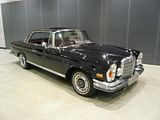
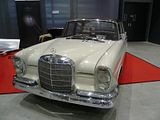 Last year, I remember seeing more of the W100 600 machines than you could count. There were far fewer on display this year. Still an imposing machine, the technology that came with this car when it was first introduced in 1963 is still impressive now.
Last year, I remember seeing more of the W100 600 machines than you could count. There were far fewer on display this year. Still an imposing machine, the technology that came with this car when it was first introduced in 1963 is still impressive now.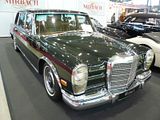 The W123 cars were the mainstay of the range from launch in 1976 until their replacement in 1984. The epitome of Mercedes “hewn from granite” engineering, they are still quite a common sight in Europe and many have found a second life in Africa where their toughness and relative simplicity ensures that they can keep going on and on and on…….
The W123 cars were the mainstay of the range from launch in 1976 until their replacement in 1984. The epitome of Mercedes “hewn from granite” engineering, they are still quite a common sight in Europe and many have found a second life in Africa where their toughness and relative simplicity ensures that they can keep going on and on and on……. Hard to believe that it is now 30 years since the W126-based “S” Class was launched. Still a great looking car, it spawned the SEC versions a couple of years later. The replacements, the W140 cars, although technically superior always looked bloated and slightly ungainly.
Hard to believe that it is now 30 years since the W126-based “S” Class was launched. Still a great looking car, it spawned the SEC versions a couple of years later. The replacements, the W140 cars, although technically superior always looked bloated and slightly ungainly.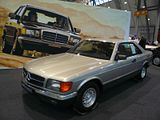
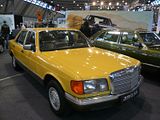 The first generation SLK cars are now starting to appreciate, and this rather bright yellow example was one of several of its brethren on display.
The first generation SLK cars are now starting to appreciate, and this rather bright yellow example was one of several of its brethren on display. MESSERSCHMITT
MESSERSCHMITTKnown for its micro-cars in the 1950s, these cars were surprisingly fast – for the brave or the foolhardy!
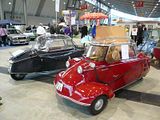 MG
MGThe Midget from the late 1920s was an entry level sports cars that enjoyed much popularity when new, and whose charms have never really faded.
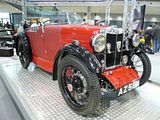
This Y series 1.5 litre saloon was the late 1940s equivalent of a 3 series……. fast and sporting but practical enough to seat the family!
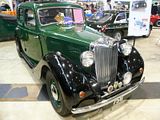 NSU
NSUFor all of the 1960s, the mainstay was the Prinz, which evolved from an economy special into some slightly larger cars with bigger and bigger engines. The TT and TTS models were successful motor sport weapons then, and now.

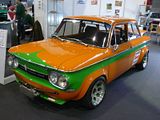
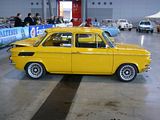 A truly bold design, the Ro80 still looks good today. Sadly, the rotary engines were just not robust enough and they crippled the company so they were totally absorbed into the Audi concern soon after launch.
A truly bold design, the Ro80 still looks good today. Sadly, the rotary engines were just not robust enough and they crippled the company so they were totally absorbed into the Audi concern soon after launch.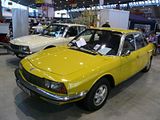

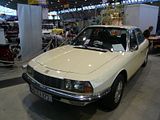
 OPEL
OPELThis car dates from 1935, and was an example of family transport for the German motorist of the time – the sort of German alternative to a Morris Eight or Austin Ten.
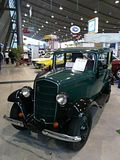 This Olympia dates from the late 1940s and was one of the cars lined up to take paying customers out for a spin.
This Olympia dates from the late 1940s and was one of the cars lined up to take paying customers out for a spin.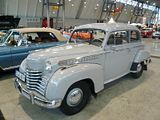
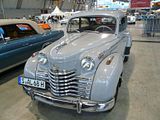 Unlike last year, where their cars were barely represented, this time there was a large Opel Owners Club stand with a wide variety of what were once commonly seen family cars.
Unlike last year, where their cars were barely represented, this time there was a large Opel Owners Club stand with a wide variety of what were once commonly seen family cars.The Kadett was always the smaller car, with the name going back to the 1930s. These Kadett B cars were from the 1960s – available between 1965 and 1973.

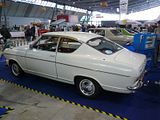
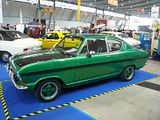 There was an upmarket version of the Kadett B, called Olympia, available in the same wide range of body styles as its sister car, and here is one.
There was an upmarket version of the Kadett B, called Olympia, available in the same wide range of body styles as its sister car, and here is one.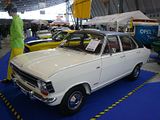
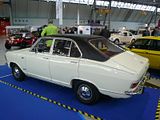
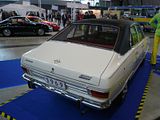 The equivalent upper medium offering for many years was the Rekord, and various of these cars, dating from the 1950s to the “D” model from the mid 1970s, were also on show, along with the upmarket Commodore, in coupe format.
The equivalent upper medium offering for many years was the Rekord, and various of these cars, dating from the 1950s to the “D” model from the mid 1970s, were also on show, along with the upmarket Commodore, in coupe format.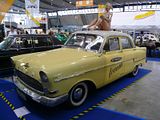

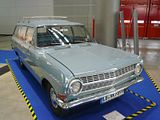
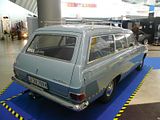
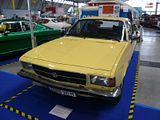

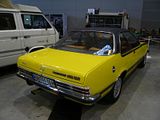 Kadett C was launched in 1973, and its significance gradually became apparent, as more and more derivatives appeared around the world – Isuzu Gemini, Vauxhall Chevette, and versions from Chevrolet for South America and Holden for Australia. The car was also successful as a rally car, and this GT/E Coupe was the road going version of the Opel version of that car.
Kadett C was launched in 1973, and its significance gradually became apparent, as more and more derivatives appeared around the world – Isuzu Gemini, Vauxhall Chevette, and versions from Chevrolet for South America and Holden for Australia. The car was also successful as a rally car, and this GT/E Coupe was the road going version of the Opel version of that car.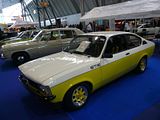 During the 1950s and 60s, Opel had a range of prestige offerings, called Kapitaen, Admiral and Diplomat, and these were some of those cars.
During the 1950s and 60s, Opel had a range of prestige offerings, called Kapitaen, Admiral and Diplomat, and these were some of those cars.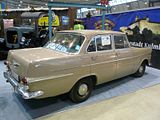


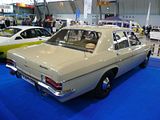
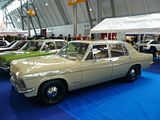
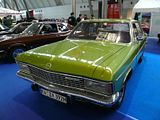
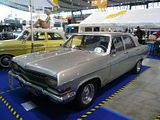
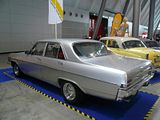 In 1968, in an attempt to move on from their rather staid image, Opel shocked the world with a very attractive small coupe, the GT. Never much of a sales success, this car came in 1100 and 1900cc versions, and it is highly prized now.
In 1968, in an attempt to move on from their rather staid image, Opel shocked the world with a very attractive small coupe, the GT. Never much of a sales success, this car came in 1100 and 1900cc versions, and it is highly prized now.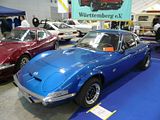 More of a success came from the Manta, launched in 1970 as a response to Ford’s Capri, and based on the mid-sized Ascona, these cars established their own following then, and now.
More of a success came from the Manta, launched in 1970 as a response to Ford’s Capri, and based on the mid-sized Ascona, these cars established their own following then, and now.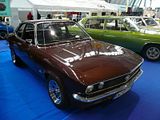
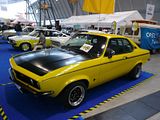
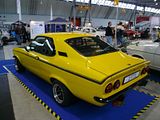
PEUGEOT
Two separate displays here: on the ground floor, there was a show of Cabriolets, including the newly launched 308CC. Not exactly a pretty car, these 402 Eclipse cars, with their retractable metal roofs came from the mid 1930s, with American-esque styling as was shared with the entire range at the time. The later 504 is a Pininfarina design, and is very attractive.
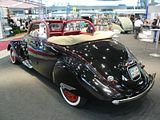
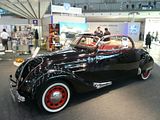
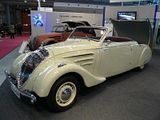
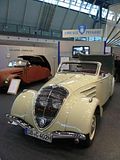

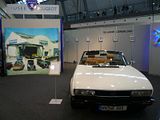 Upstairs, there was a display from the “Aventure Peugeot” museum, in Sochaux. Centrepiece is the spectacular 601 model., and this was flanked by some other cars, a 172, a 190 and an earlier offering.
Upstairs, there was a display from the “Aventure Peugeot” museum, in Sochaux. Centrepiece is the spectacular 601 model., and this was flanked by some other cars, a 172, a 190 and an earlier offering.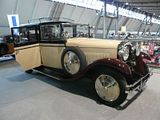
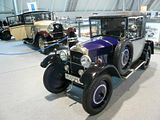

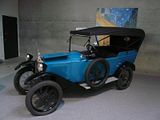 PONTIAC
PONTIACAn early Firebird from about 1968. Far more desirable than the increasingly heavy and vulgar models that replaced this iconic name over the next 25 years.
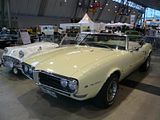 PORSCHE
PORSCHELots of Porsche cars scattered through the show.
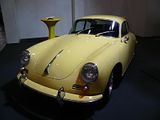
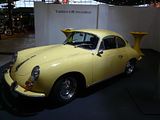
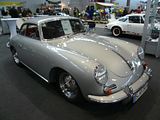
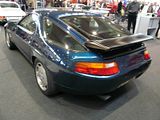
 There was a stand for the 924/944/968 club, with 4 cars on it.
There was a stand for the 924/944/968 club, with 4 cars on it.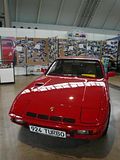

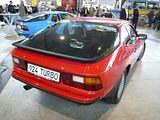
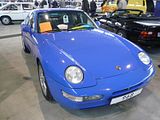
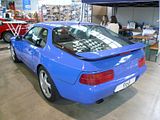
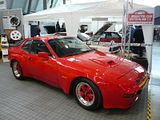 Separately, there was the “official” Porsche stand, with a mix of vehicles including one of the three Porsche tractors that was on show. It seems that this is the link to the new Cayenne Diesel.
Separately, there was the “official” Porsche stand, with a mix of vehicles including one of the three Porsche tractors that was on show. It seems that this is the link to the new Cayenne Diesel.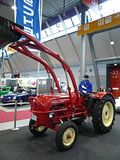 Of course, just about every variant of the 911 family could be found somewhere in the displays.
Of course, just about every variant of the 911 family could be found somewhere in the displays.
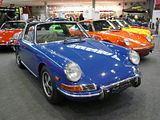
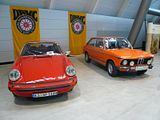
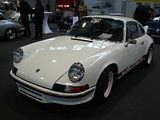
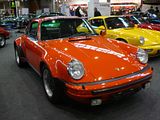
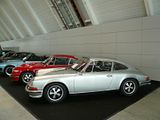 A couple of the long-running and highly successful 917 cars were on show.
A couple of the long-running and highly successful 917 cars were on show.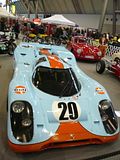
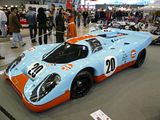 RENAULT
RENAULTVolume seller from La Regie following its launch in the early 1950s was the 4CV, and this is a splendidly restored example.
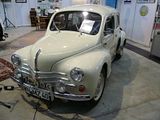 Aside from the main stand were a couple of 1960s cars, the R4 and this, the rarely seen R6. The sign in the screen said words to the effect that “a treasure need not cost much”, and judging by the unrestored state of this one, that is definitely true!
Aside from the main stand were a couple of 1960s cars, the R4 and this, the rarely seen R6. The sign in the screen said words to the effect that “a treasure need not cost much”, and judging by the unrestored state of this one, that is definitely true! A separate stand was dedicated to the R5 Turbo, with 4 cars on show:
A separate stand was dedicated to the R5 Turbo, with 4 cars on show: One of the most recent cars, and of questionable classic status was this, an R21 Monaco. But then, ask yourself when you last saw one? Asking price was only about 1000 Euros.
One of the most recent cars, and of questionable classic status was this, an R21 Monaco. But then, ask yourself when you last saw one? Asking price was only about 1000 Euros.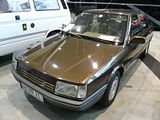
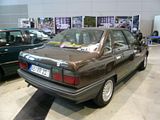 ROLLS-ROYCE
ROLLS-ROYCEA couple of 1930s models were on show, a bit unceremoniously parked at the side of one the halls.
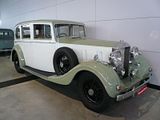
 A more formal display was to be found on the Gallery above Hall 1, with some more recent cars to be seen.
A more formal display was to be found on the Gallery above Hall 1, with some more recent cars to be seen. 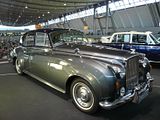

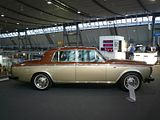
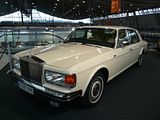 ROVER
ROVERPart of the display of cars from what ultimately constituted Austin-Rover, were these Rover cars: a Sport Tourer, a pre-war P2-16, the much loved “Auntie Rover” P4 and the P5, so beloved of the Royal family, UK Government and now the classic car fraternity.
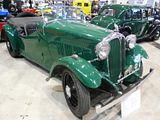
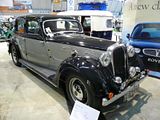
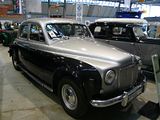
 From a much more recent time is a 75
From a much more recent time is a 75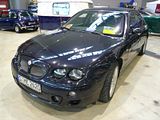 SEAT
SEATA couple of examples of the 1200 Coupe, a mid 70s offering that was never exported to Britain, but represented a rare deviation at the time from re-engined an re-badged Fiats that constituted the rest of the range at the time.
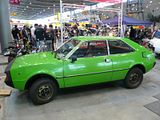
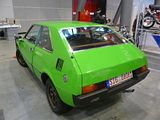 SIMCA
SIMCALooking nothing like the boxy saloon from which it was derived, is this 1300 Coupe. Styled by Bertone, these cars were expensive and did not sell in large numbers.
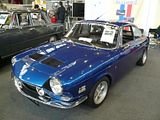 SIMPLEX
SIMPLEXChain driven it may be, but these cars were the performance heroes of their age!
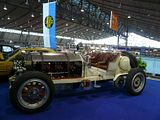 SKODA
SKODASkoda had their own stand, with a mix of new and old cars. Sharing stand space with the latest Superb, Roomster and Octavia were some cars from the early 1960s: the Felicia Convertible and the original Octavia
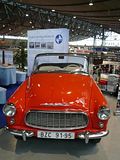
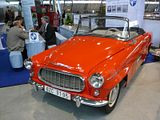
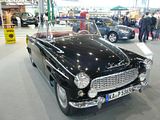
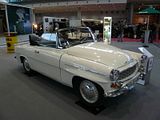
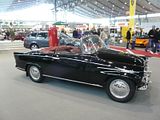
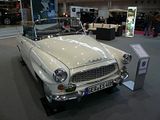
 STEYR-PUCH
STEYR-PUCHThese were Fiat 500s made under licence in Austria. This is the rarer Giardiniera (estate) model.
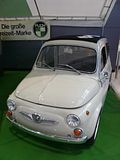 STUTZ
STUTZA museum car, this Bearcat was on the stand publicising the “Autosammlung Stein”, a display of cars in Schramberg. I must look on the map to see where this is!
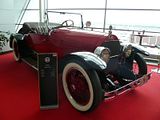 TATRA
TATRANot perhaps what you might expect, but this is a 1935 car.

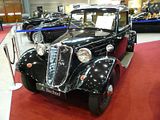 TOYOTA
TOYOTAAbout the only Japanese cars in the entire show was this display from the LandCruiser club, presenting some of the models from the 70s, which was when they first went on sale in Western Europe.
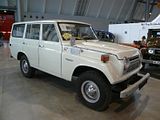
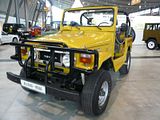 VOLKSWAGEN
VOLKSWAGENSurprisingly few VWs in the show, considering the long-held dominance of this marque of the German market. There were of courses a few cars from the air-cooled era:

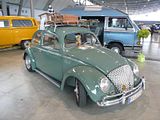
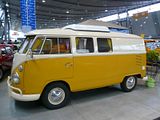 Three examples of the first generation Passat.
Three examples of the first generation Passat.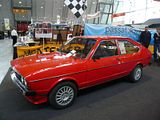
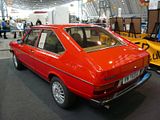
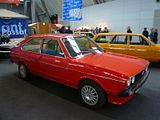
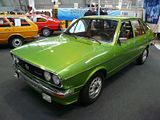
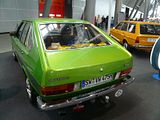
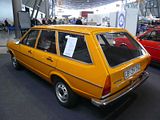
 A first generation Scirocco.
A first generation Scirocco.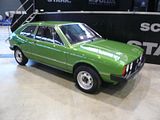
 A 1979 Mark 1 Golf, which was for sale, with the reminder that this car would qualify for “historic” plate status and the various tax benefits that accrue from such a status.
A 1979 Mark 1 Golf, which was for sale, with the reminder that this car would qualify for “historic” plate status and the various tax benefits that accrue from such a status.
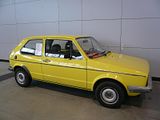 VOLVO
VOLVOOn the main Volvo stand there was a 121 “Amazon” estate car, and its Duett precursor.
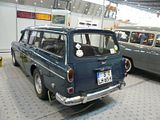
 Numerous P1800 sports cars were to be found around the show.
Numerous P1800 sports cars were to be found around the show. 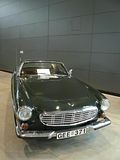
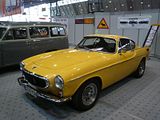 MISC VINTAGE
MISC VINTAGEAn array of very early vehicles, including a Lux, a Grout and a Detroit Electric Car:
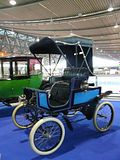

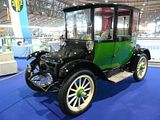
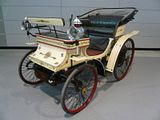
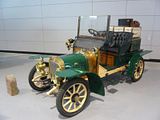
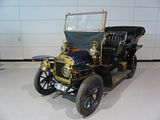
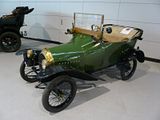 FUEL TECHNOLOGY CARS
FUEL TECHNOLOGY CARSA special display on the first floor gallery was of a wide variety of cars that all used different sorts of technology to propel them, ranging from the Wankel engined NSU Spider, an electric BMW 2002, a solar powered car, and a Fuel Cell Mercedes “A” Class.
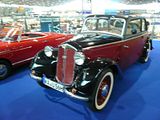
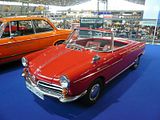
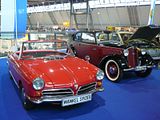

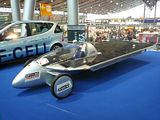 PETROL PUMPS
PETROL PUMPSSomething that bit different was a large display of petrol pumps from the ages.
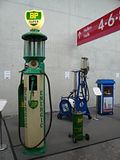
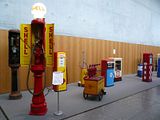
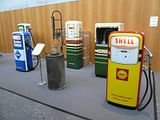

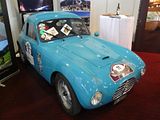
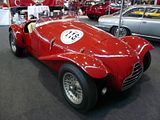
2009-11-29 12:24:48



























































































































































































































































































































































































































